24 expert knife tips to save you time… and save your fingers
Lauren Weymouth
22 March 2017
Knife or death
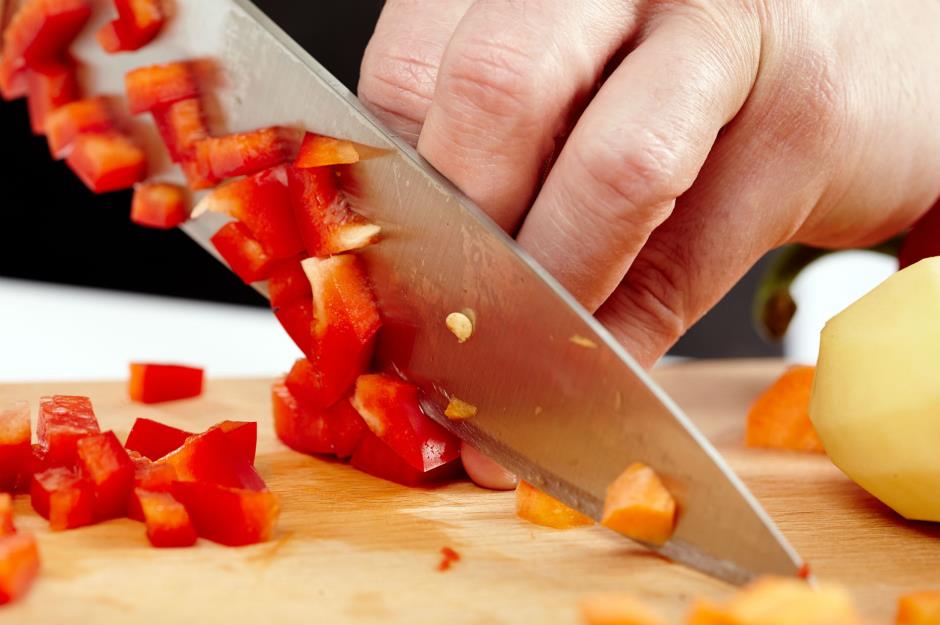
Shutterstock
Preparing your food might seem like a simple task, but you can save a lot of time (and fingers) by learning how to use knives properly. We took part in a knife skills class at London’s Waitrose Cookery School, led by head chef Andrew Morris. Here are some handy hacks we picked up to help you become a pro on the chopping board.
Have fewer knives of better quality
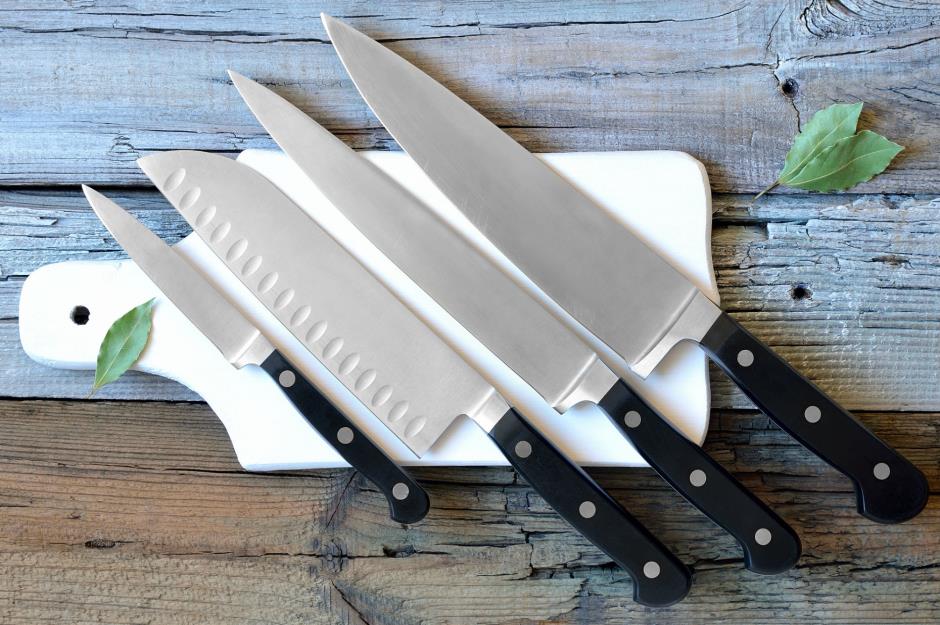
Shutterstock
You don’t need to own a lot of knives. But investing in some knives of better quality is worthwhile. The only knives you really need are a thin, small paring knife to deal with finer cutting, and a chef’s knife for the rest of the work. Both knives will allow you to cut just about anything, but there’s no harm in owning more.
Always sharpen your knives to get the most out of them
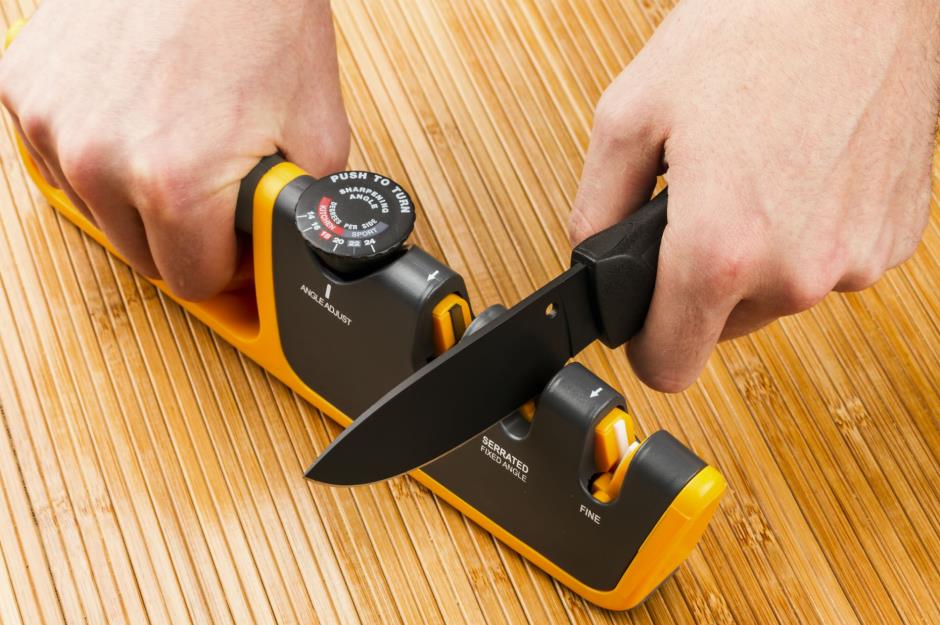
Shutterstock
We often leave our knives in their stand and forget that, while chopping away, we’re blunting the sharpness every time. Manual sharpeners often get better results than electrical, so use a tool like the above to slide your knife back and forth, testing as you go.
Use a whetstone as an alternative sharpener
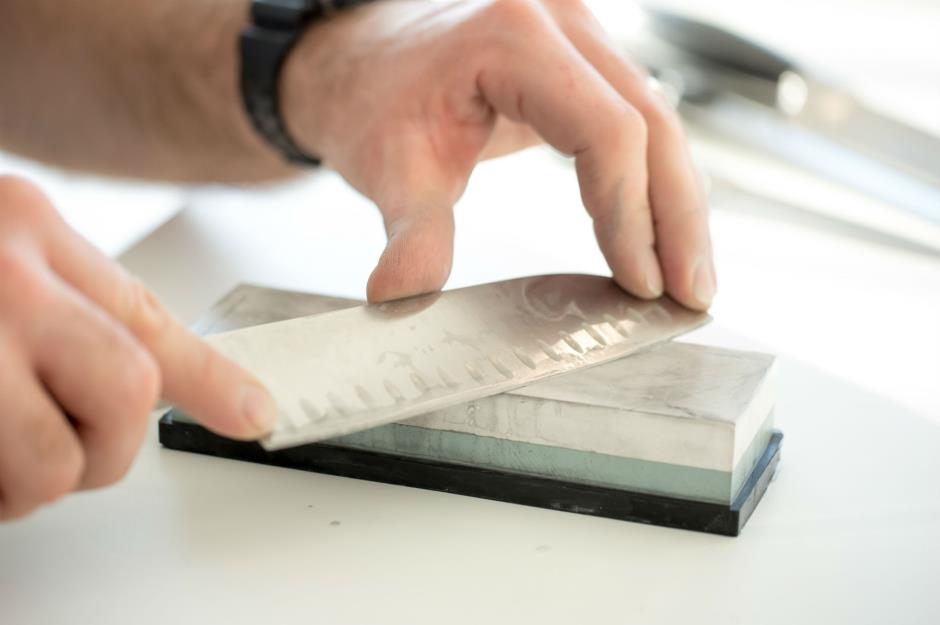
Shutterstock
Whetstones are also a great way to sharpen knives. The stones are available in varying grits and can be made from a wide range of materials. Soak the stone first, before guiding it along the stone at an angle. Just remember to keep it flat and to keep the stone wet throughout.
If you’re a beginner, use a 2-stage sharpener

Lauren Weymouth
Morris recommends a 2-stage pull through sharpener if you’re just starting out. The first-stage system will sharpen blunt blades, while the second-stage system finely hones straight-edge blades for long-lived edges.
Bread knives can be sharpened

Shutterstock
Even serrated knives can be sharpened, you just need to get the right technique. Don’t go sharpening the knife with the sharp edge down – you will just blunt the curves. Instead, sharpen it on the flat side using a sharpening rod, which runs down the knife at a 15-degree angle.
Don’t wait until a knife gets dull before taking care of it
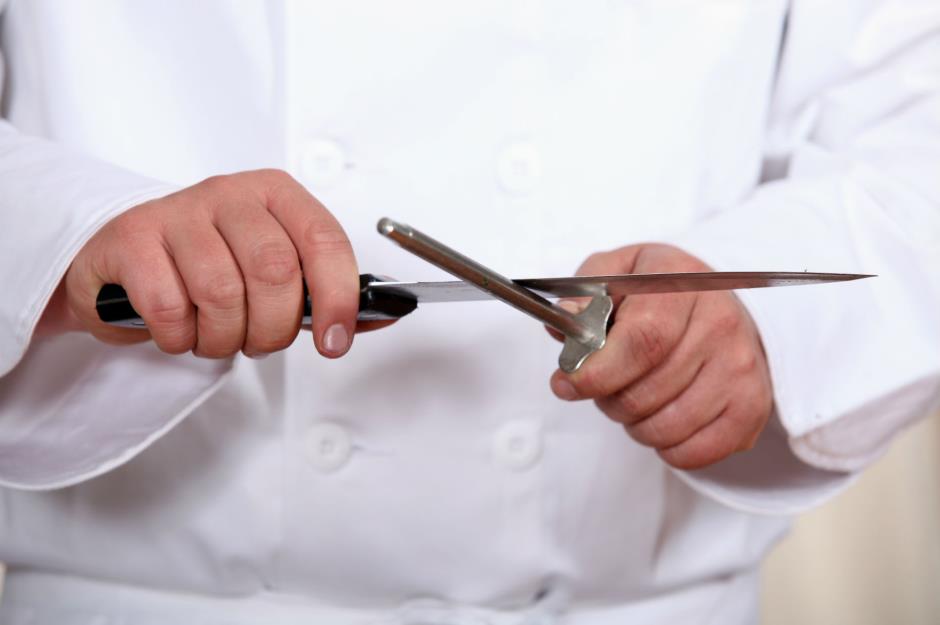
Shutterstock
Sharpen your knives every few weeks to avoid them becoming too blunt. The longer you leave them, the worse they will get.
Avoid glass chopping boards
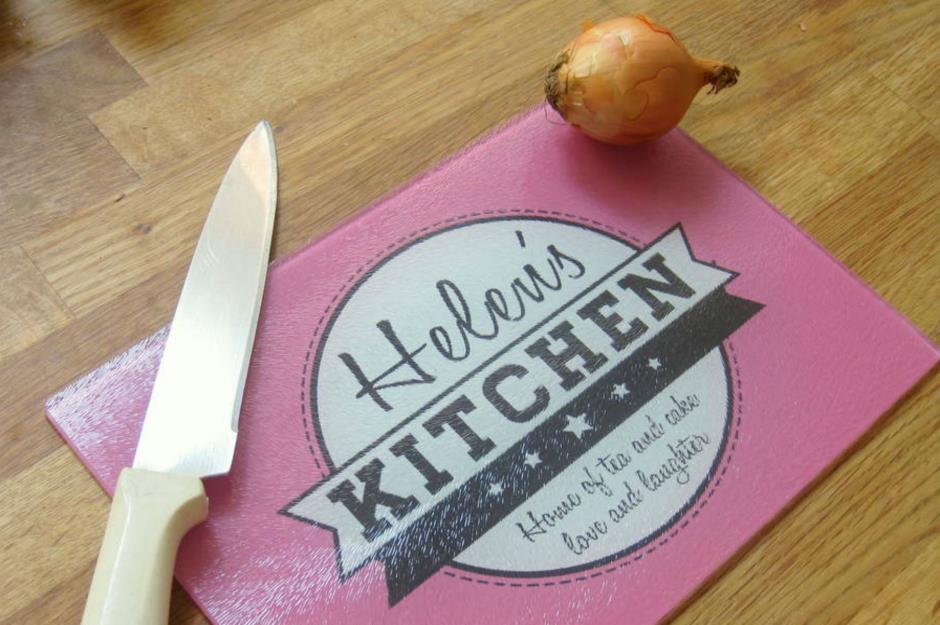
Notonthehighstreet.com
Glass chopping boards will quickly dull your knives. Wood will provide the most gentle surface for your knives and keep them sharper for longer. Don’t forget to keep them clean and sanitized to avoid hoarding any bacteria in the cracks.
Put a wet paper cloth under your chopping board
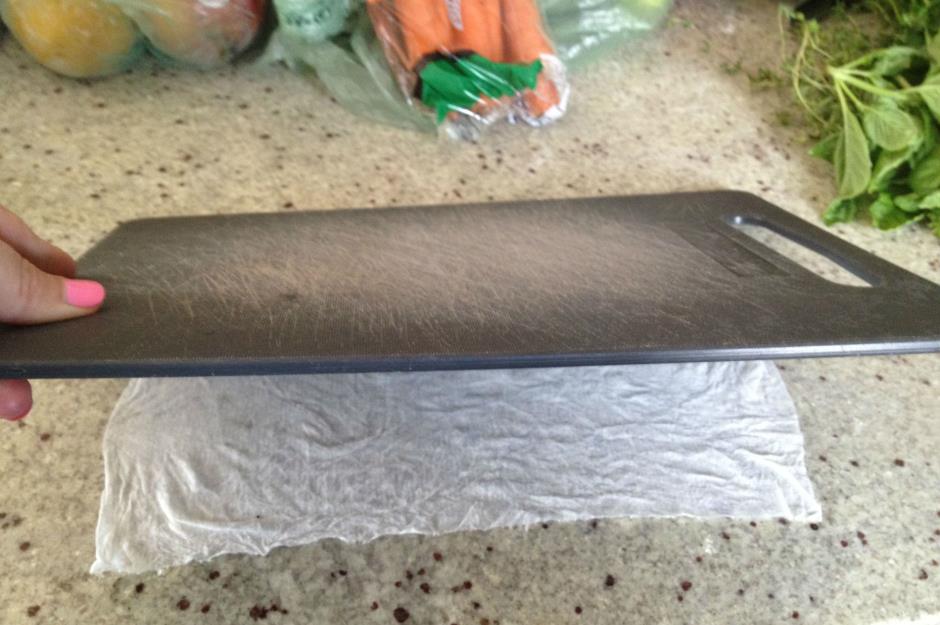
Cucinakristina.com
Place a wet paper cloth under your chopping board to prevent it from slipping around, this will keep the board steady and stop your food from slipping away and your fingers from getting cut.
Avoid the ‘death grip’
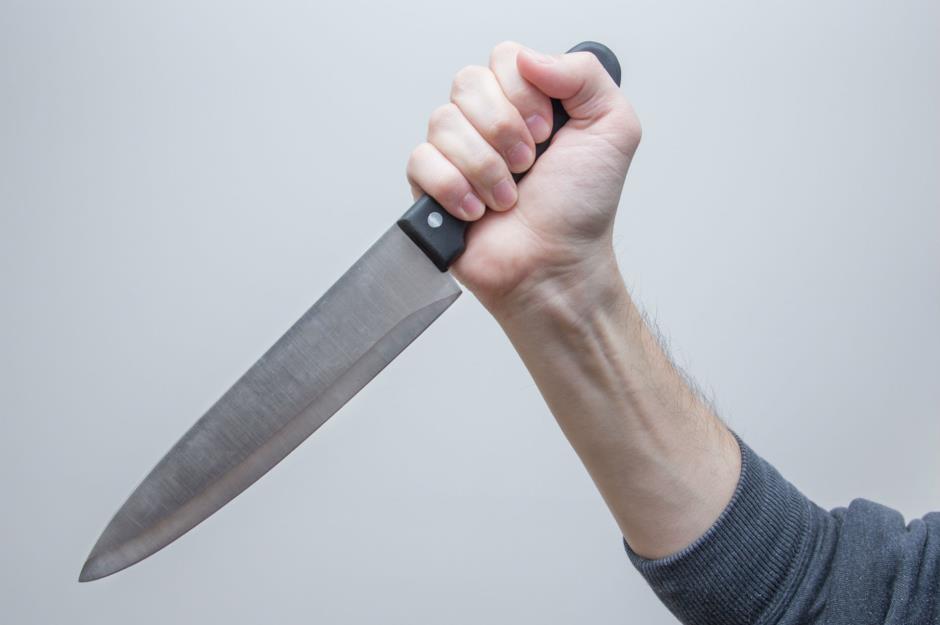
Shutterstock
Try not to hold your knife too tightly. Morris claims relaxing your hand will make the knife feel much safer in your grip, and safer for your fingers. Relaxing your hands and wrists will enable the blade to do the cutting naturally.
Position your fingers so it’s impossible to cut them
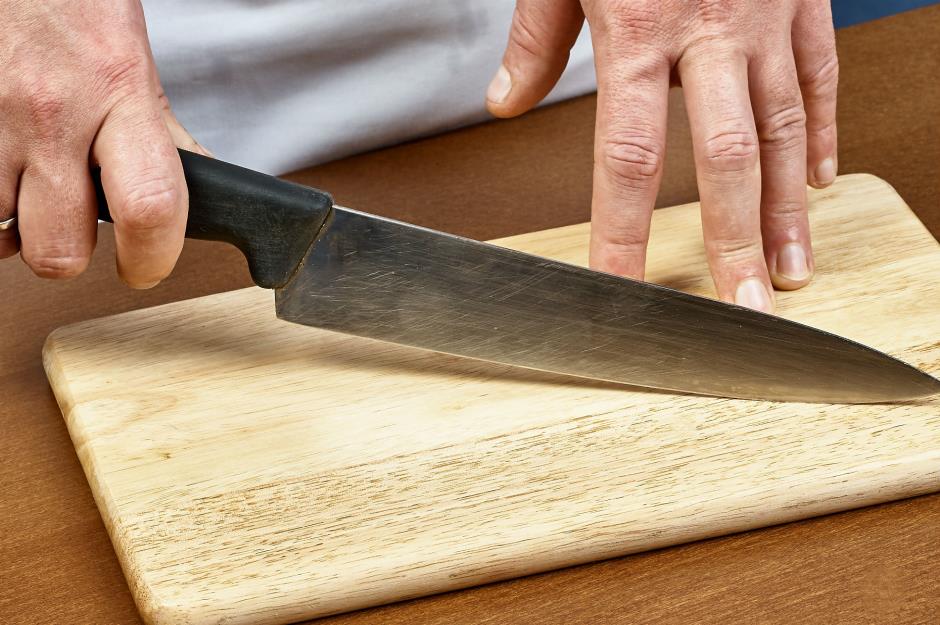
Shutterstock
Hold the knife in a way that means your fingers are kept out of sight… all 10 of them.
The knife should be at the same height as, or just below your elbows
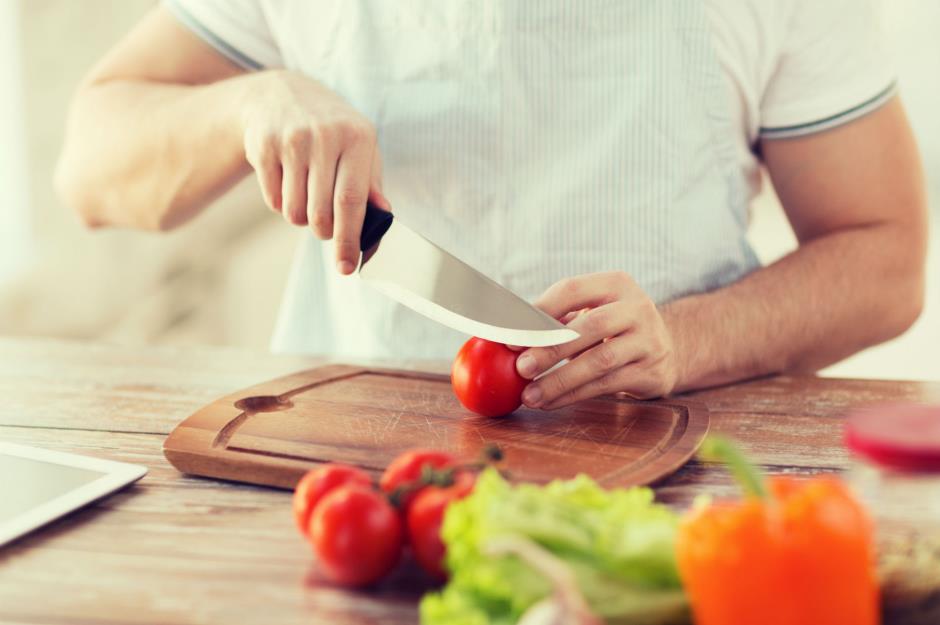
Shutterstock
This will mean the whole upper body, not just your hands, can put pressure on the knife.
Always use a smaller knife for cutting fine things
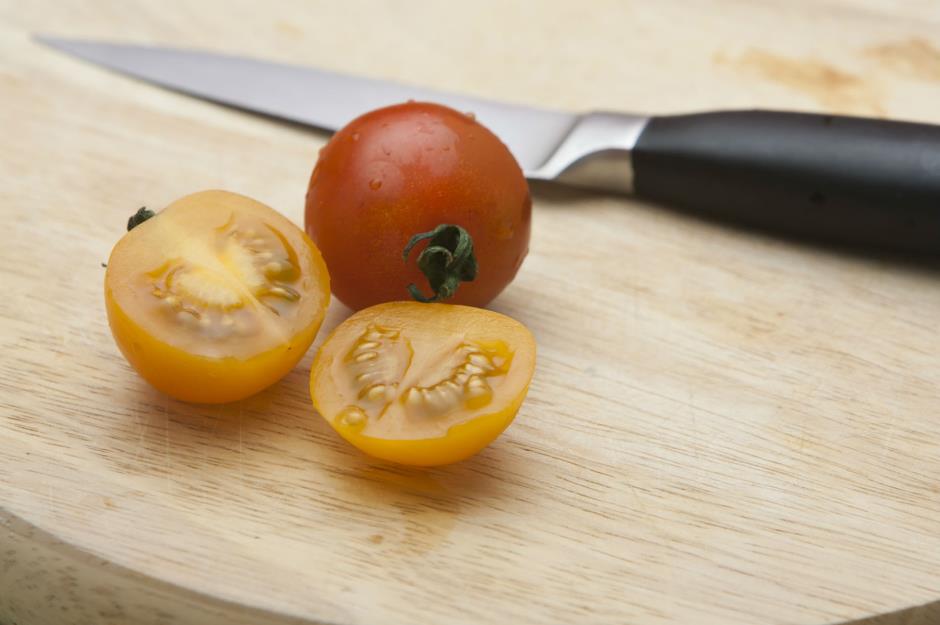
Shutterstock
If you’re cutting up small objects, use a small knife for the ultimate precision. A chef’s knife is great, but it won’t cut as finely as a paring knife when you’re dealing with tiny things.
Use the ‘claw’ to keep your fingers safe
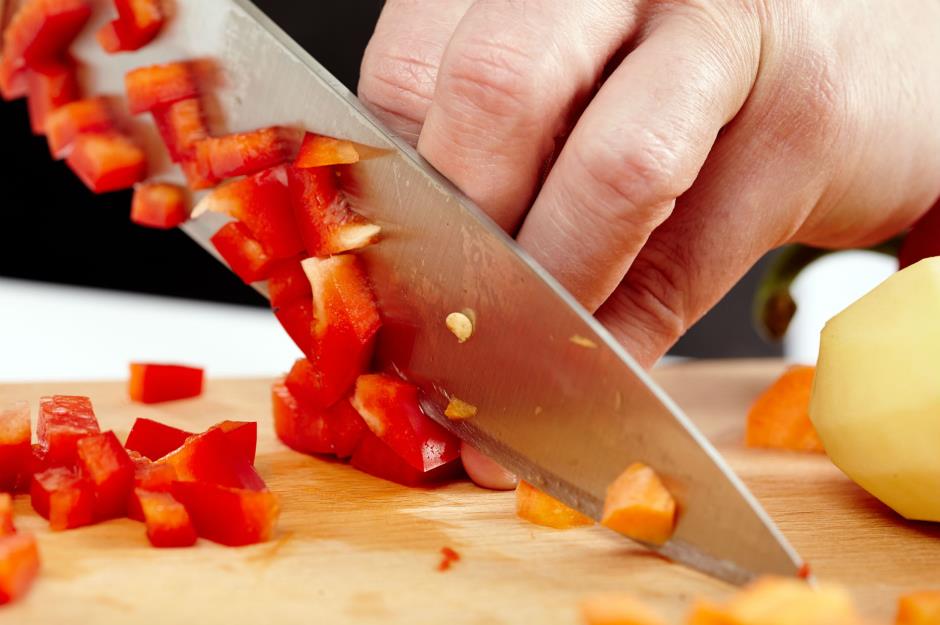
Shutterstock
The ideal position for keeping your hand from any danger is called the ‘claw’. Your fingertips should be curled under and the knife should be almost pressed against your knuckles, which will prevent it from going near your fingertips. As Morris explains: “If your fingers know where the knife is, your eyes don’t need to”.
When the knife catches up with your fingers, move it back
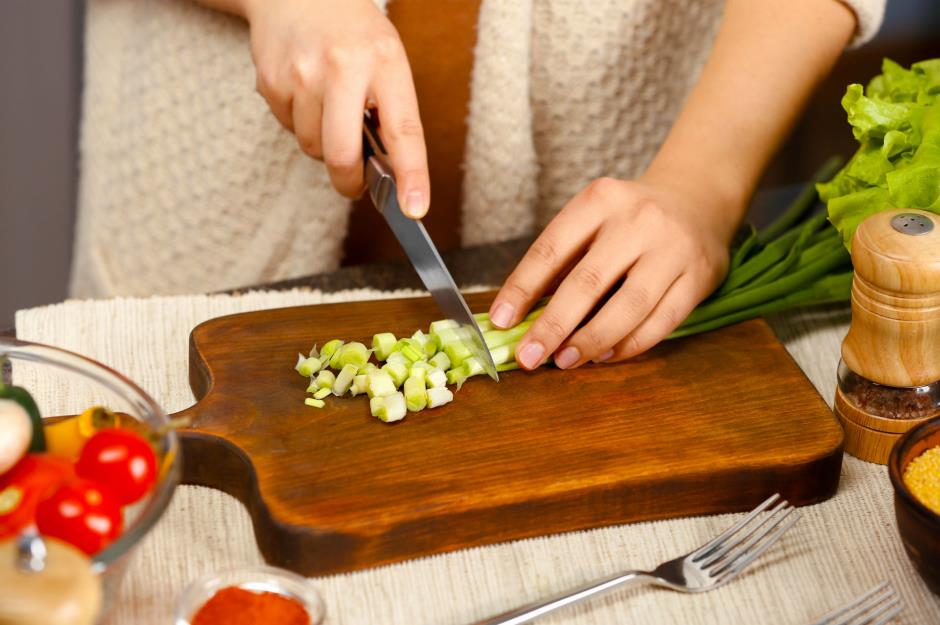
Shutterstock
Don’t forget to move your fingers back when the knife catches up with them. Walk them back as you go along.
Don’t let the knife leave the chopping board
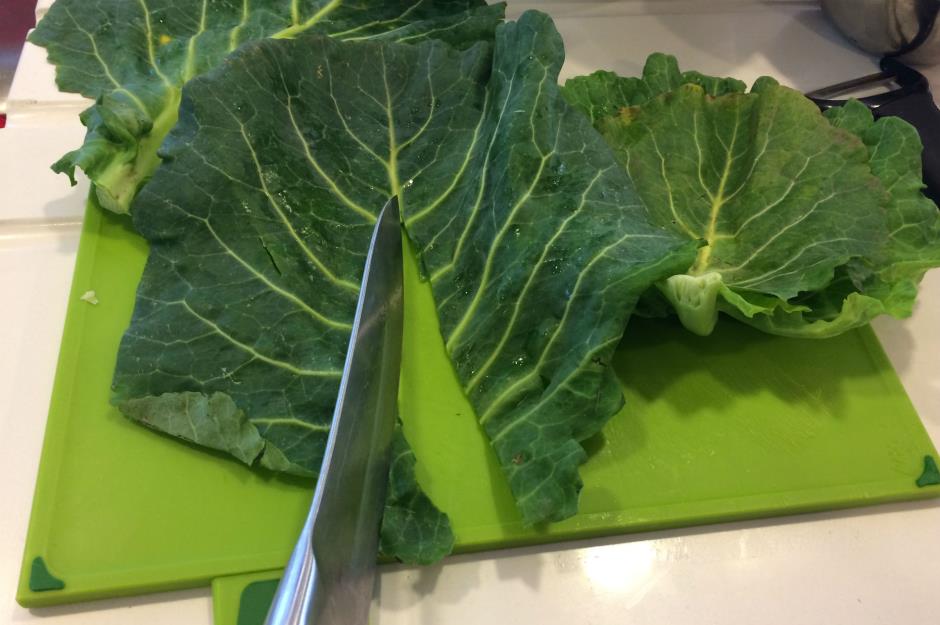
Lauren Weymouth
Don’t ever fully let the knife leave the chopping board. Instead, just rock the knife back and forth to gain full control over it.
Shave a flat surface onto round objects before cutting
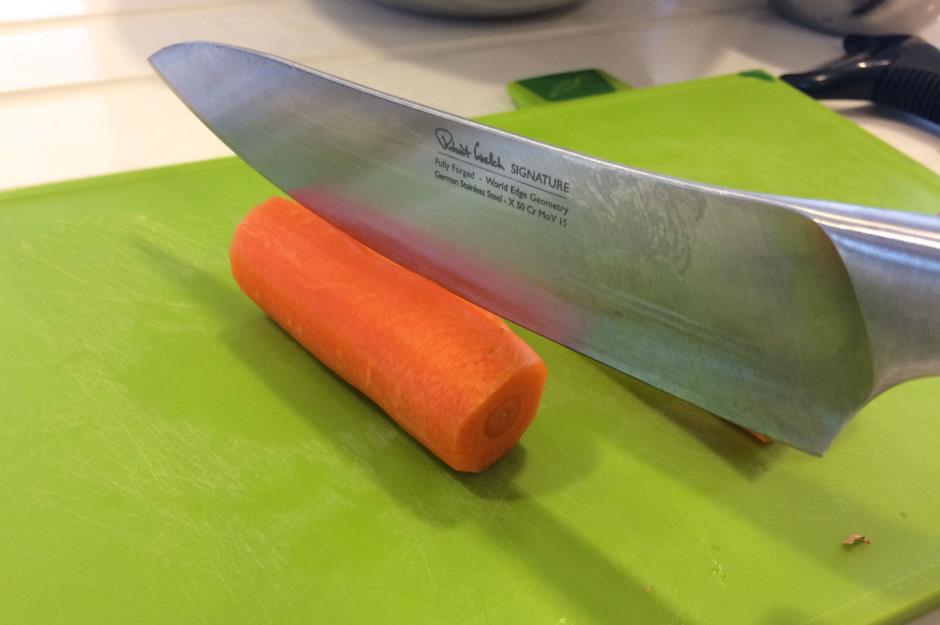
Lauren Weymouth
Cut a flat surface on any round object so it doesn’t slip – square off round vegetables such as carrots and courgettes/zucchini by shaving off the round sides so you have a square block.
Use a knife to chop garlic – not a crusher
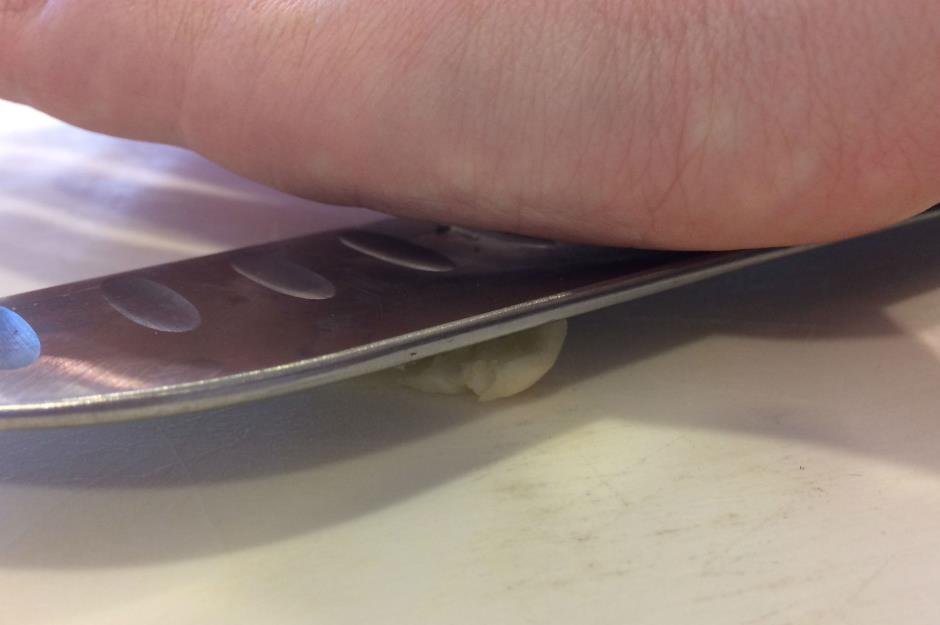
Lauren Weymouth
According to Morris, crushing a clove of garlic will cause it to lose most of its flavor. Instead, cut the root of the garlic away and press the side of your knife against the clove and press down until it’s crushed. The skin will remove itself, so simply peel it off and then chop the remainder into tiny pieces.
Always do long cuts first
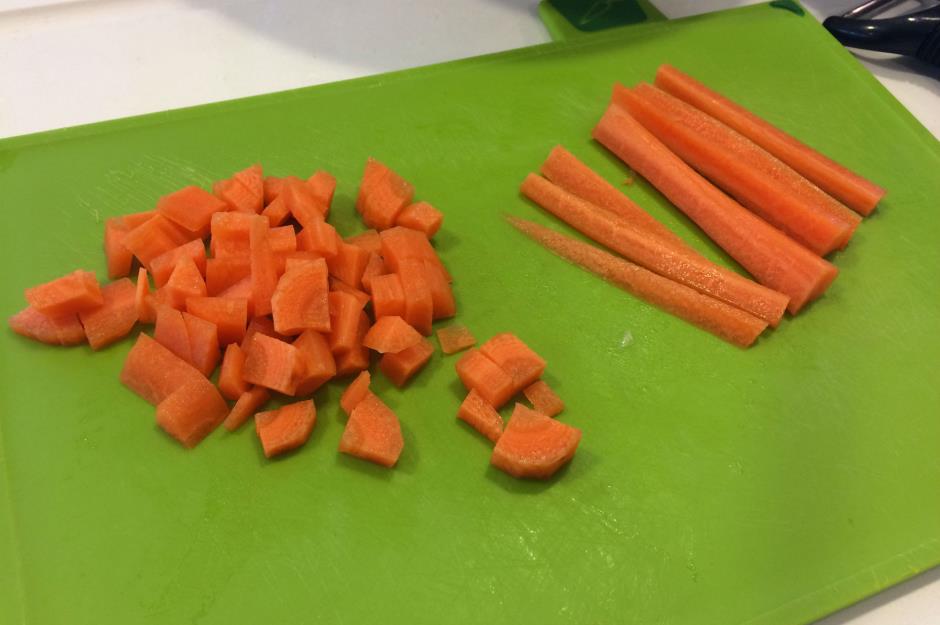
Lauren Weymouth
Whatever you’re chopping, always do the long cuts first. By cutting vertically, you will find dicing is much easier.
Always leave the root of an onion attached before cutting

Lauren Weymouth
If you know how to cut an onion well, you’re pretty much set. The main tip for cutting an onion is not to chop off both ends. Cut the pantry end away, but make sure you keep the root attached. This will act as a handle for you while you are cutting the rest.
Slice an onion horizontally first

Lauren Weymouth
Before you do anything else, make three cuts into the side of your onion, 75% of the way. Once you’ve done this, you’ll already have sliced most of the onion, but cut vertically and horizontally across the top to dice it into smaller pieces.
Keep hands flat when cutting fruit segments
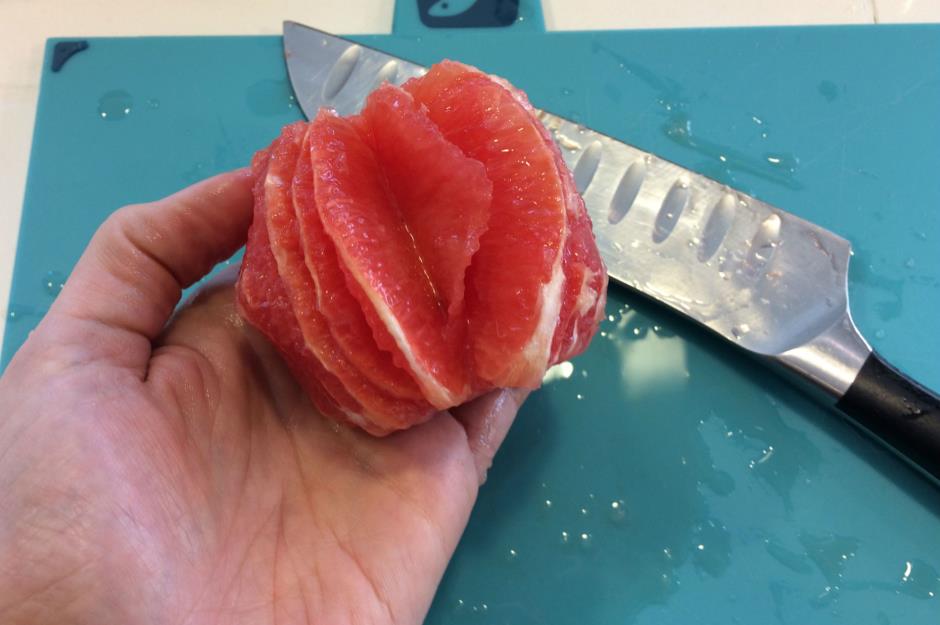
Lauren Weymouth
If you’re cutting a fruit into segments, such as a grapefruit or an orange, hold it in the palm of your hands and cut downwards in between the membrane that separates the segments. Cutting this way will allow you access to as much of the fruit as possible (and shield your fingers).
Always use a filleting knife for filleting a fish
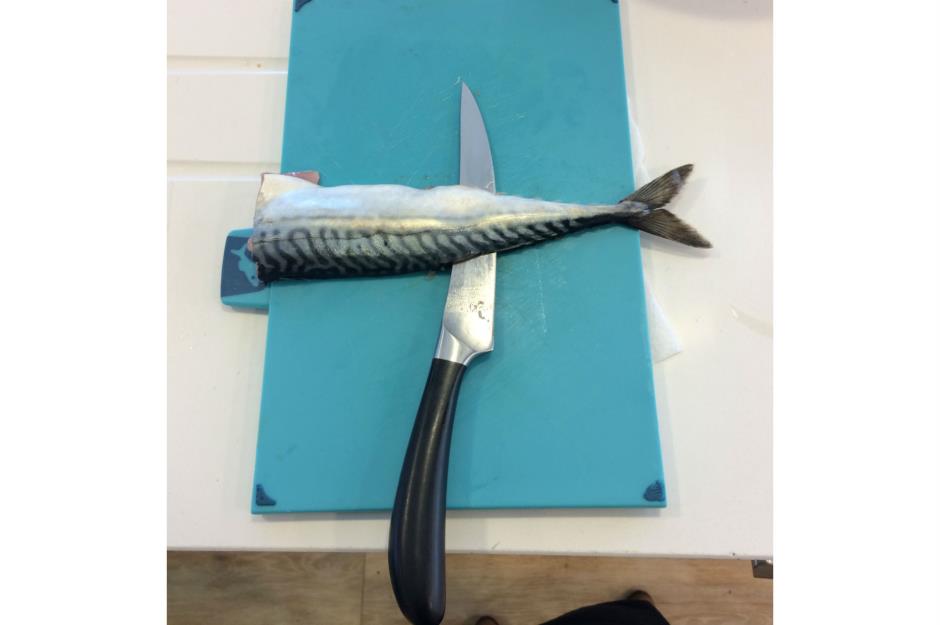
Lauren Weymouth
A knife with a flexible blade allows you to move easily between the flesh and bones of the fish. The sharper the knife, the easier the job.
Use a serrated knife for food other than bread
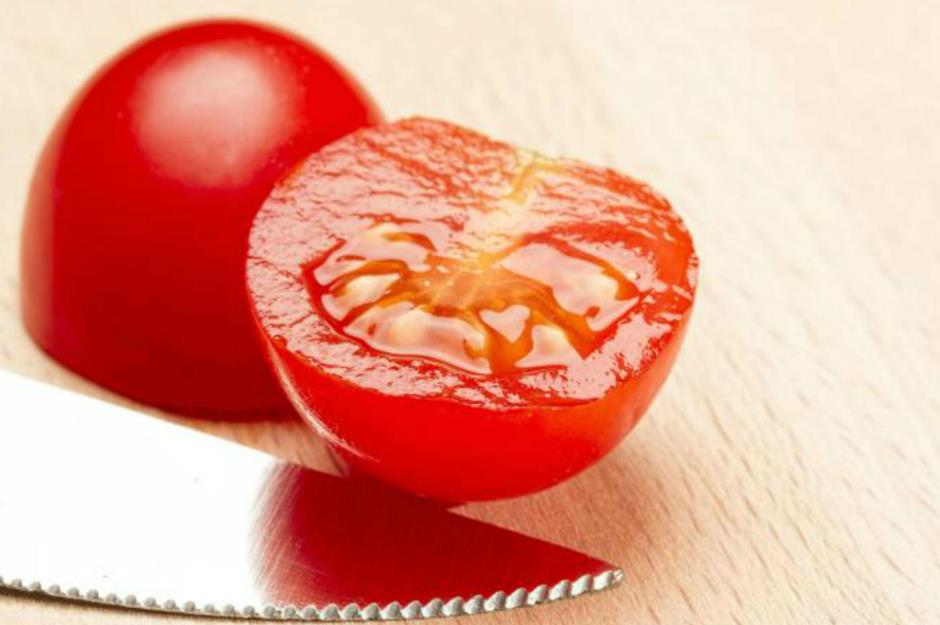
Shutterstock
The great thing about serrated knives is they have a good grip. Use a bread knife to cut soft items, such as tomatoes, which are likely to slip on the chopping board.
Practice, over and over again
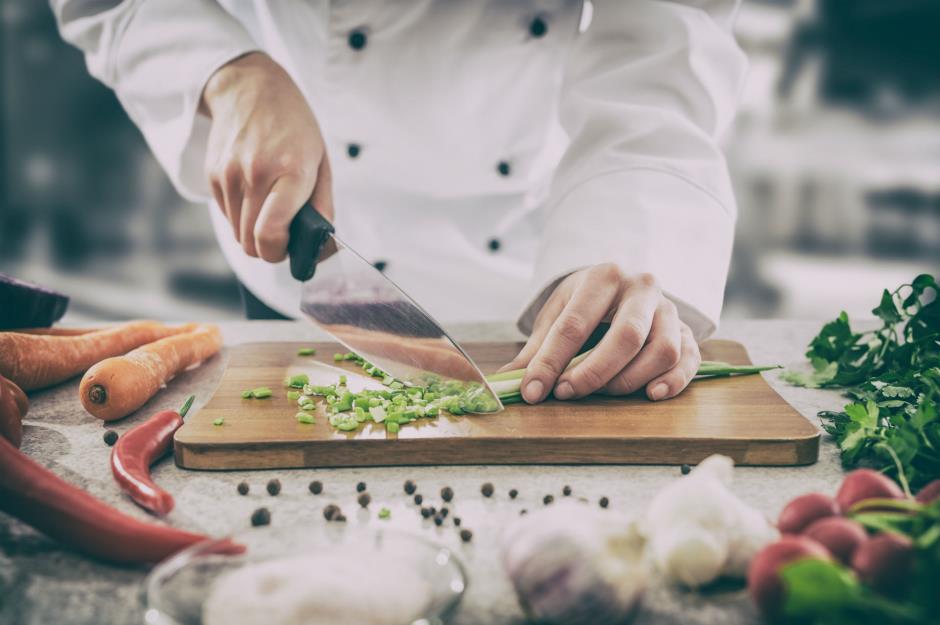
Shutterstock
See chefs chopping onions in seconds and feel jealous? We’re afraid you’re going to have to just keep on practicing. Use these techniques every time you take to the chopping board, and you’ll soon pick up speed in no time – just remember to keep your fingertips as far away from the blade as possible.
Comments
Be the first to comment
Do you want to comment on this article? You need to be signed in for this feature
Most Popular
Reviews 31 unbelievably sugary cereals from around the world